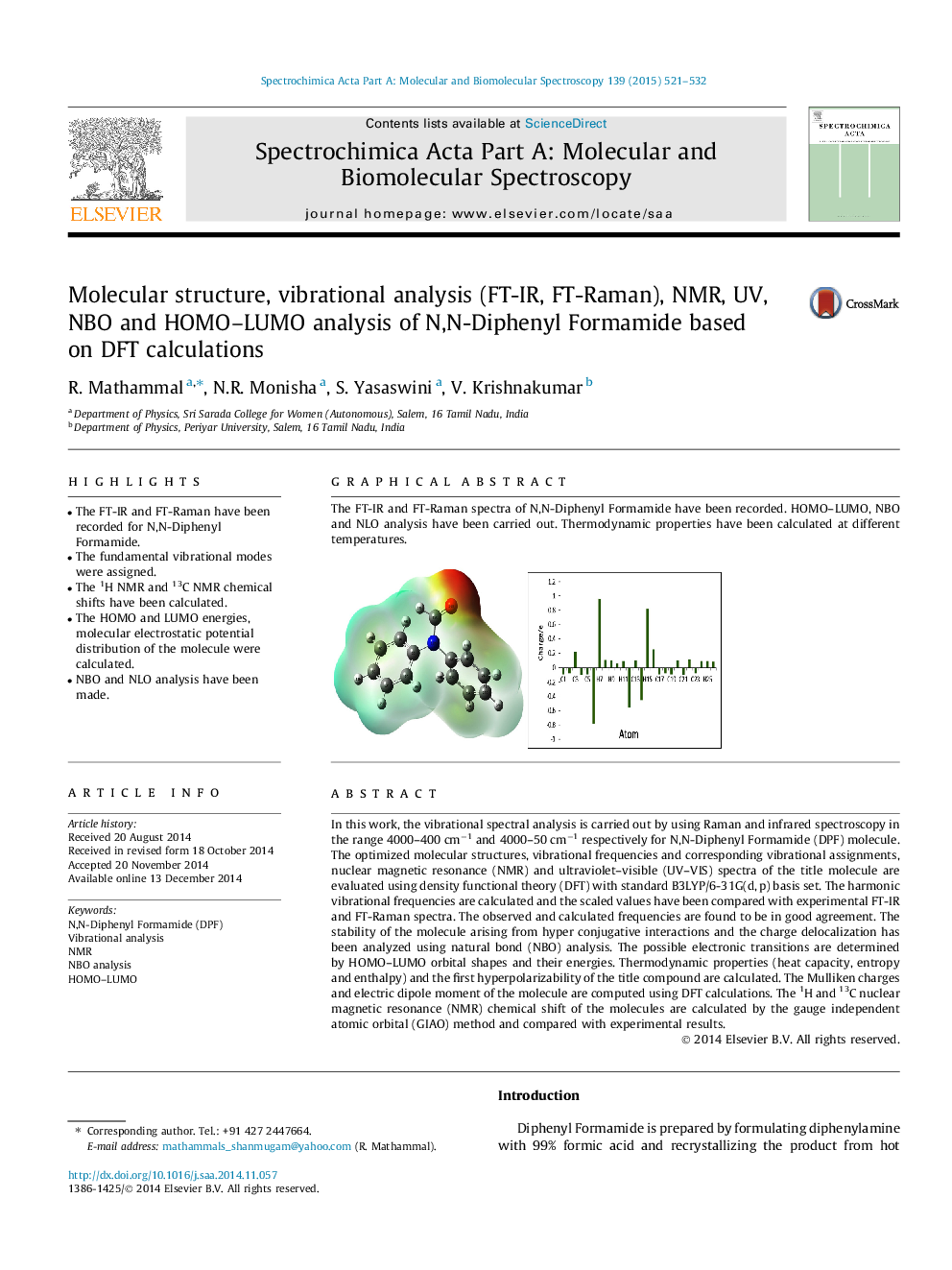| Article ID | Journal | Published Year | Pages | File Type |
|---|---|---|---|---|
| 1232740 | Spectrochimica Acta Part A: Molecular and Biomolecular Spectroscopy | 2015 | 12 Pages |
•The FT-IR and FT-Raman have been recorded for N,N-Diphenyl Formamide.•The fundamental vibrational modes were assigned.•The 1H NMR and 13C NMR chemical shifts have been calculated.•The HOMO and LUMO energies, molecular electrostatic potential distribution of the molecule were calculated.•NBO and NLO analysis have been made.
In this work, the vibrational spectral analysis is carried out by using Raman and infrared spectroscopy in the range 4000–400 cm−1 and 4000–50 cm−1 respectively for N,N-Diphenyl Formamide (DPF) molecule. The optimized molecular structures, vibrational frequencies and corresponding vibrational assignments, nuclear magnetic resonance (NMR) and ultraviolet–visible (UV–VIS) spectra of the title molecule are evaluated using density functional theory (DFT) with standard B3LYP/6-31G(d, p) basis set. The harmonic vibrational frequencies are calculated and the scaled values have been compared with experimental FT-IR and FT-Raman spectra. The observed and calculated frequencies are found to be in good agreement. The stability of the molecule arising from hyper conjugative interactions and the charge delocalization has been analyzed using natural bond (NBO) analysis. The possible electronic transitions are determined by HOMO–LUMO orbital shapes and their energies. Thermodynamic properties (heat capacity, entropy and enthalpy) and the first hyperpolarizability of the title compound are calculated. The Mulliken charges and electric dipole moment of the molecule are computed using DFT calculations. The 1H and 13C nuclear magnetic resonance (NMR) chemical shift of the molecules are calculated by the gauge independent atomic orbital (GIAO) method and compared with experimental results.
Graphical abstractThe FT-IR and FT-Raman spectra of N,N-Diphenyl Formamide have been recorded. HOMO–LUMO, NBO and NLO analysis have been carried out. Thermodynamic properties have been calculated at different temperatures.Figure optionsDownload full-size imageDownload as PowerPoint slide
